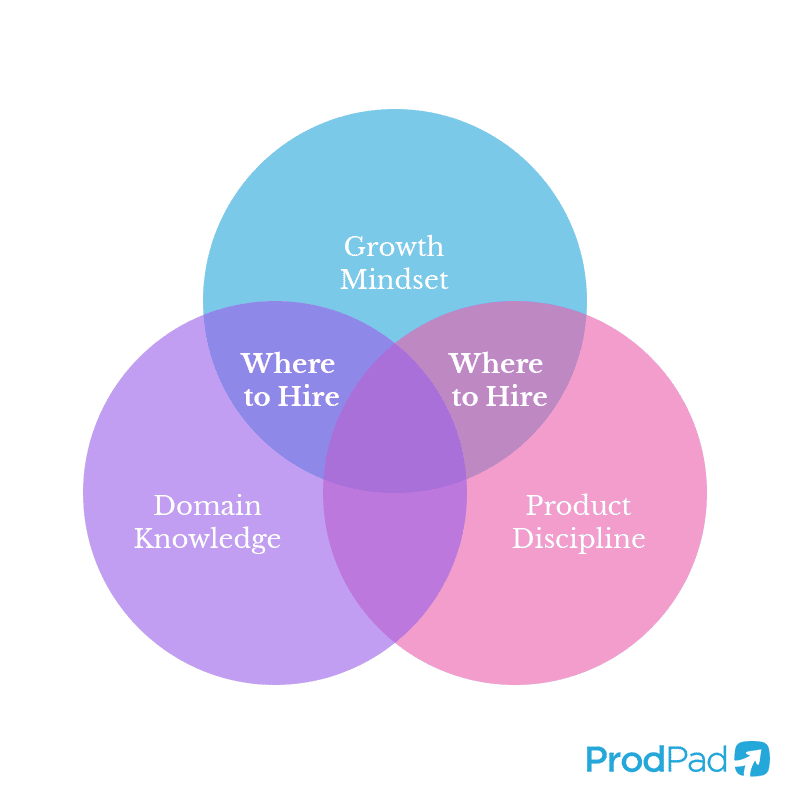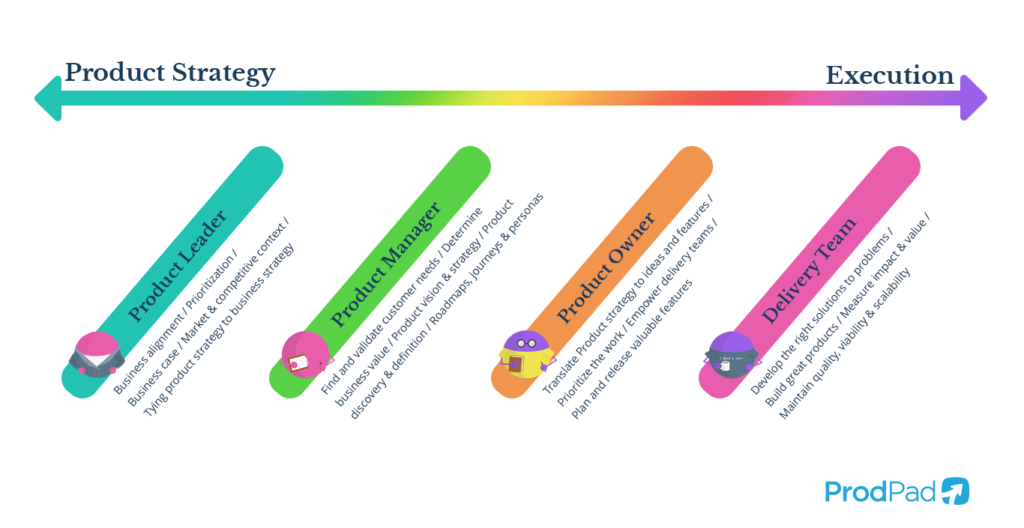The Secrets Behind a High-Performing Product Team Structure
A product can fail or succeed based on the strength of the product team structure. Great product teams are the ones that delight in solving hard, gnarly problems. The ones that dig deep, roll up their sleeves, and work productively toward resolution with no b
lame, shame, or raised voices when something goes sideways. The same teams that, when things go right, reinvest energy and momentum in themselves to help take on the next big idea.THESE are the teams we all aspire to be on, the ones we aspire to create for our companies.
So what are the critical elements of putting together a high-performing product team? In this article, we’ll look at key skills, disciplines, mindsets, and roles that are essential to any high-performing team.
Why is the structure of the product team important?
If you’ve worked in Product for any amount of time, my hope for you is that you’ve encountered (and hopefully, been a part of) a magical, high-performing, “we-can-do-anything-we-set-our-minds-to” type of team. I like to think about these as the Dream Teams.
These teams don’t happen by accident. Leaders tasked with hiring and forming product teams around prioritized outcomes and value streams usually have a wealth of options when it comes to assembling a team; they likely have talented candidates from inside the company with years of proven experience in the specific context of the industry and competitive marketplace. They might also be interested in bringing in expertise in product management from outside the company to accelerate the practice and level up existing teams.
How do you know which is the right option for your new team? Chances are, the answer is “both,” – but if you don’t do it with some degree of intention and strategy, the chances of your team hitting all-star status is relatively low.
How do I create a high-performing team?
Here are five pieces of advice I give to leaders when they are thinking about how to promote, attract, and retain great product talent for their transformed organizations:
1. Design the product team you need
Unless you’re charting start-up greenfield territory, you’re likely thinking about augmenting, extending, or scaling your current product team structure. Perhaps you’re extending into new markets, perhaps you’ve got a disruptor on your tail, or perhaps you’re leading an effort to formally stand up a product practice for the first time. Getting clear on WHY you’re building your team and what pressures you expect them to face in their first 6-12 months is going to tell you a lot about who you need on the team.
A product team that is built for innovation looks different than one built for speed. If you’re trying to leapfrog competitors or expand into new markets, it might make sense to over-index to market and competitor knowledge across your team, or lean heavier into new technology expertise. If you need a team to accelerate value delivery on a proven offering, ensuring your team has sufficient expertise in scaling delivery teams is essential.
2. Focus on the rule of three
I don’t believe there is a “perfect pedigree” of product people. Part of the magic of the work is that we’re a multi-disciplinary lot, and bringing different experiences and disciplines into a product team is a big part of the secret sauce. But it’s also important to remember that you can’t just pluck a high performer from another discipline and assume they can be successful in product management.
Because all things come down to a good Venn diagram, I think about product talent this way:

There are three elements that make up a great product person
- They understand the business context of their product (Domain Knowledge)
- They have experience working in a product model (Product Discipline)
- They have an innate drive to learn, absorb, improve, and evolve as professionals (Growth Mindset)
I’m here to tell you that you can and will find top performers if you hire for two of the three: a Growth Mindset and either Domain Knowledge or Product Discipline. You can train someone in the business or in product management, but taking on both is a recipe for disaster. And a Growth Mindset is non-negotiable.
I’ll be honest: almost every time I share this, I get some very dirty looks from around the table. Executives love to believe that their business is so complex, so different, that they can’t afford to take a chance on someone who hasn’t been in the industry for their entire career (or who hasn’t been working in the company for 10+ years).
Similarly, I’ve seen seasoned product execs balk at the idea that product management can be taught or upskilled. They demonstrate the same strength of ego that there’s some secret formula that can’t be trained in our line of work.
I cry foul on both of these arguments because if you can find a candidate with one of those key elements plus a demonstrated growth mindset and ability to learn and apply at speed, you’re golden.
3. Extend your thinking to product and technical team members
Once you start thinking about hiring individuals according to the rule of three, then you turn your attention to the entire team, which must include both product and engineering resources. When you establish the Growth Mindset as the baseline, you can then start to consider how your team lines up against the Product Discipline and the Domain Knowledge. The goal is a balanced team across both of those dimensions.
I’ve seen teams succeed with new Product Owners who come out of Business Analyst roles with deep domain knowledge and a strong drive to learn and evolve their careers. But they are most successful when paired with a Product Manager who has led product teams in the past and has some miles logged on establishing a product discipline with strong agile practices, as well as with an engineering lead and scrum master that can help guide and shape the day-to-day activities until the PO gets the hang of things.
I’ve also seen teams with very strong domain and technical knowledge and no experience in product or agile mature quickly when paired with a PO who is new to the company or industry but who has deep product experience.
Here, it’s about balance and ensuring the team has bench strength in domain and discipline knowledge.
4. Ensure your product team structure covers strategy to execution
There are plenty of articles out there about the specific roles and responsibilities of product team members, and I’m not going to bring anything new to that particular table. Instead, I’ll offer this recommendation: role clarity for every member of your team is critical – but they must understand the other roles on their team as well as they understand their own. If people focus only on their own roles – and don’t actively engage in how the team functions as a whole, the team will falter.
Consider articulating the areas of focus for the team, from strategy to execution, on a continuum. While it’s critical that each part of the team focus on their own areas, they can’t ignore the context of their teammates. In other words, the Product Manager can’t be successful without context and collaboration with their leader and the PO, and their delivery team. And the delivery team can’t execute effectively without a deep understanding of, and an opportunity to shape the strategy.

5. Be ready to invest in your product team
No matter what, be prepared to offer the training and support these teams and individuals need to get acclimated and up to speed. Utilize mentors or the buddy system to help people build domain knowledge. Provide new product people with access to training, professional communities, and content to support their development in the product discipline.
And then get out of their way, let them dig in, and ask them to tell you what they need to feel confident in their work. Because the growth mindset is one that needs to be fed regularly to flourish, and your willingness to invest in their development signals your belief in their success.
How do I know if I’ve created a high-performing product team?
You’ll know you’re on the right track when you see a product team coming together to fill in the gaps for one another as they gel and start delivering product value to your customers and business value to your bottom line. They’ll care as much about how they are working as what they are working on, but they never let one come at the expense of the other. They’ll demonstrate their growth mindset by constantly looking for ways to do their work just a little bit better, sprint by sprint. They’ll support each other in spending time with customers and user data, and you’ll see those insights show up in the backlog, the roadmap, and the product strategy. Other teams will want to know how they did so much so fast and had such a great time doing it.
This is when you know you have built the right product team structure: you’ve got a Dream Team on your hands.
